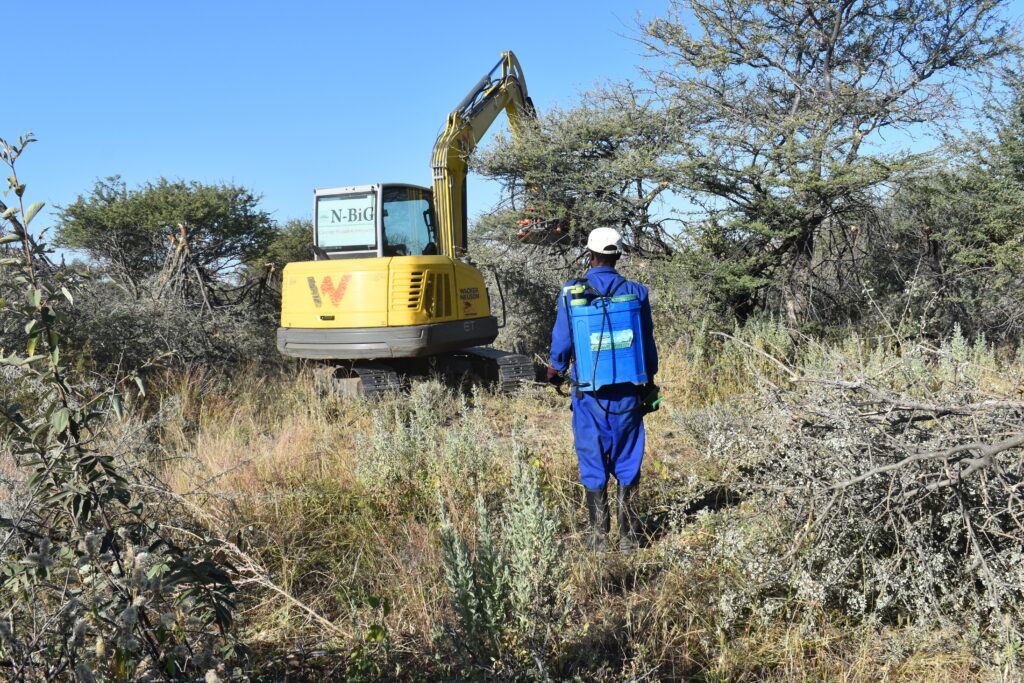Bush control should aim for selective bush thinning rather than clearing. The aim of bush thinning should be to restore ecosystem health of rangelands. This is important for the restoration of savannas that will improve the carrying capacity (good for farmers and beef export markets), help to sustain the natural biodiversity and aesthetics (good for tourism), and most importantly, help to restore groundwater recharge (good for reducing the vulnerability to droughts). Optimum benefits are derived from rangelands that are thinned of bush, and that are maintained that way after initial bush thinning. These principles should guide all bush thinning activities.
Aftercare is the process of taking care of harvested land or the post-treatment process after bush harvesting to prevent bush regrowth or re-encroachment. The importance of after-care is emphasized in the draft Policy on Bush Encroachment and by various Authors in Namibia. When land is cleared it creates a ‘vacuum’ in which weeds and woody plants (sometimes more aggressive colonizers than the original encroacher species) will quickly establish themselves. Various methods are in use to manage the regrowth of bush following harvesting. These include hand application of arboricides, stem burning, and intensive browsing by goats or antelope. The judicious use of fire can also be considered as a preventative rather than a curative measure to prevent young seedlings getting established.
Further reading on bush thinning principles and recommended density after bush thinning can be found in the Forestry and Environmental Guidelines booklet for bush harvesting projects.
More on aftercare can be found in the Bush Control Manual
Contact our advisory service at: 061-242949 or info@n-big.org for questions and queries regarding bush encroachment, bush thinning and aftercare.

